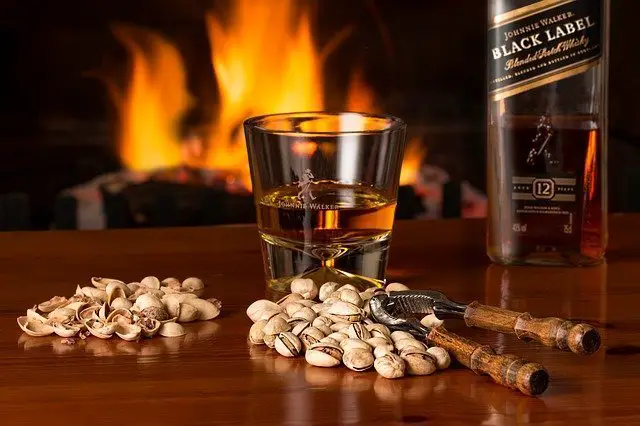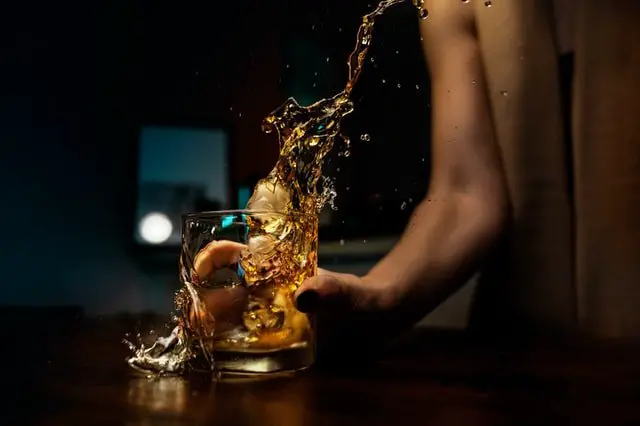How much sugar and calories does whiskey have? In short, one of the most exquisite drinks that can not miss for a meeting is whiskey. A drink that characterizes the most important moments of many people, being a protagonist at the table as one of the best options today. If you love whiskey, do you know how much sugar and calories are in each glass?
It is no secret to many. Alcoholic beverages excel, not only in turning us into daredevil acrobats capable of seeing everything double and surviving. These beverages carry with them a significant nutritional load to know. And this time, it is the turn of the water of life, better known as whiskey, of which we also know other interesting facts.

An Irish branded beverage
Whisky has been in existence for more than 600 years, or at least according to what is documented, as it is thought to have existed before the 15th century. However, there is no certain source of its specific origin beyond simply Ireland.
Its main buyers worldwide are the United States, France and Uruguay. However, it is considered one of the most exquisite beverages in the world, being characterized as one of the few alcoholic beverages that can be drunk without any accompaniment other than ice, soda, or just a minimum of water.
How is whiskey made?
There are two ways to obtain whiskey. The first of these is made through the fermentation of different types of cereals in conjunction with the distillation of malt. In this process, the barley (malt) is cleaned, then soaked and submerged in water for days. It will remain in the water until it can germinate, so that it can then be roasted when it dries.
Shortly after drying, it will be toasted, which will lead it to be milled and mixed with water to obtain its sugar. This will be fermented with yeast, and when finally distilled, will give rise to the precious whiskey.
Secondly, the process is not as complex or extensive as the first one. It basically consists of a method based on distillates of vegetable origin and essences, which will allow obtaining a drink with an essence, flavor and taste very similar to whiskey itself.
To obtain whiskey, the drink needs to ferment for at least 3 years, otherwise it cannot be considered whiskey. It is produced through the distillation of the ferment of wheat, rye and other cereals, as well as malt and beers, with an alcoholic content of 40 to 60% by volume.
Types of whiskey: How much sugar and calories does whiskey have?
Whisky has not had to invest much effort to become a benchmark beverage in hundreds of countries. In fact, it is known that every hour, at least 50 whiskies are exported from one country to another, which shows the level of consumption that this drink has sustained for many years.
This has given rise to a variety of whiskies differentiated in their purity and production process respectively. These are the most popular:
- – American whiskey: Probably known to many. Jack Daniel’s is the most popular American whiskey, made from corn fermented for at least 2 years in oak barrels. Its elaboration has certain influences from Ireland, due to the cultural exchange as a consequence of the historical Irish immigration to North America.
- Irish whiskey: With a triple distillation and barley process, this whiskey has a very particular essence compared to its counterparts. But not only that, but also in its denomination, which is known as whiskey.
- Scotch Whisky: It is known as Scotch, and is one of the most sought after, not only in Scotland, but worldwide. Its popularity can be explained by the rules of its production, designed on strict measures to obtain a unique taste. This, together with its distillation process in oak barrels, results in a unique product.
- Japanese whisky: Although this line has not achieved the popularity of the first three mentioned, it has not failed to take important steps in its expansion. Its whisky, Yamazaki, was recognized as the best whisky worldwide for 2013. Its flavor has a lot of character, and its elaboration is based on the highest quality standards.
Finally, how many calories and sugar are in a whiskey drink?
We cannot specify the amount of calories in a glass of whiskey. However, it is possible to clarify that each 100 ml of whiskey has an approximate of 100 calories respectively.
In terms of sugar content, whiskey is not exactly a sweet drink. Specifically, it has 0.11 g of sugar per 100 ml. This proportion may vary slightly depending on the type of whiskey, but none will make a significant difference in any of the cases.
Does its consumption represent a harmful effect on health?
Everything in excess is harmful, a way in which we can explain this idea without many words. Calories are not exactly bad for our health. However, excessive consumption can lead to problems such as overweight. The user need only be wary of excesses, although as is evident, the whiskey does not exceed in calories.
The consumption of sugar presents a similar circumstance, except that our body may not be as tolerant to this compound as in the case of calories. Irresponsible sugar consumption could lead to hypertension, overweight, diabetes, migraine, etc. Everything will depend on the user’s medical history and the frequency of sugar consumption.
Low sugar and calorie content
As we can see, there is not a large amount of calories and sugar in the whiskey. Some users use to mix it with other beverages to obtain a sweeter taste, as is the case of Coca Cola. All this will depend on the preferences of each individual in this regard. However, this will eventually alter the nutritional load of the beverage.
Consulted web sites
Read also: Which whiskey is better Chivas, Old Parr or Buchanans?; Which whiskey is better Buchanans or Johnnie Walker? ; Does Whisky Affect Your Cholesterol Levels?; How many glasses, or measures of whiskey do you get drunk with?
This post is also available in:
![]() English
English ![]() Deutsch (German)
Deutsch (German) ![]() Español (Spanish)
Español (Spanish) ![]() Nederlands (Dutch)
Nederlands (Dutch) ![]() Português (Portuguese (Portugal))
Português (Portuguese (Portugal))

